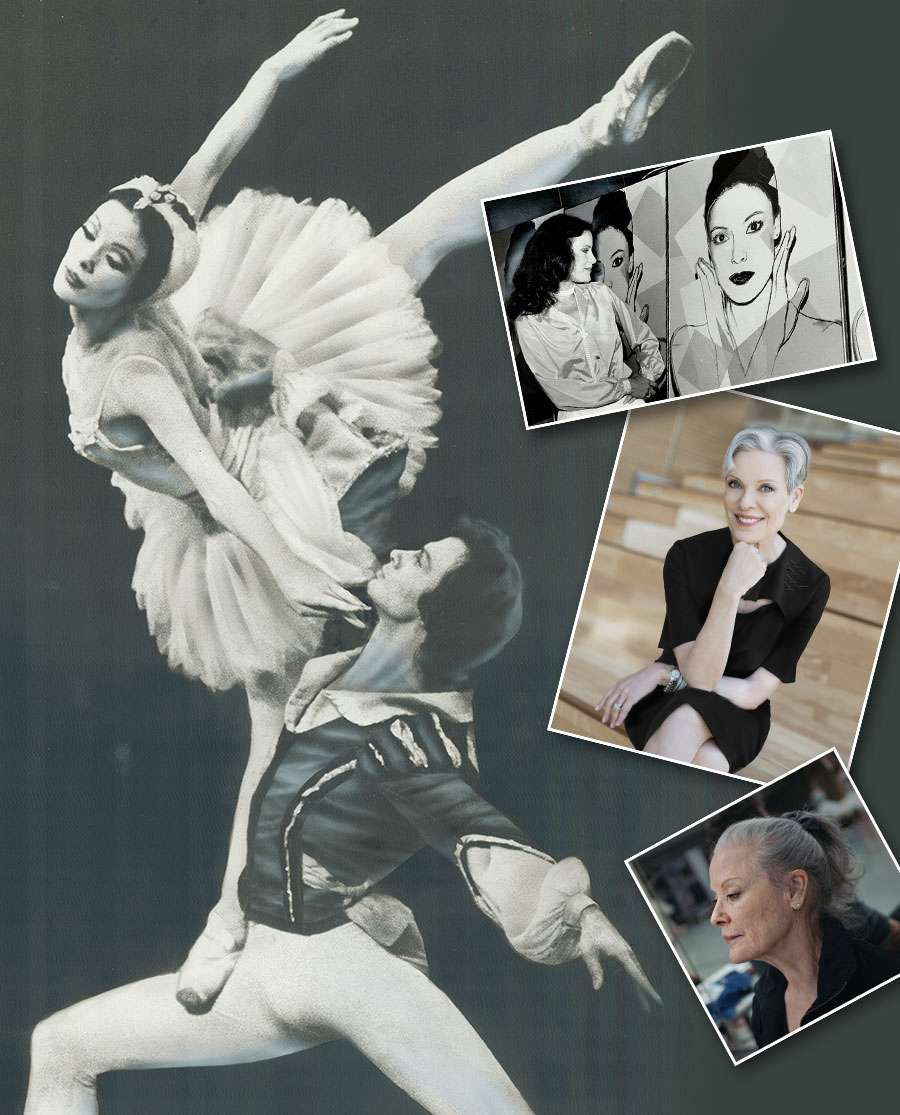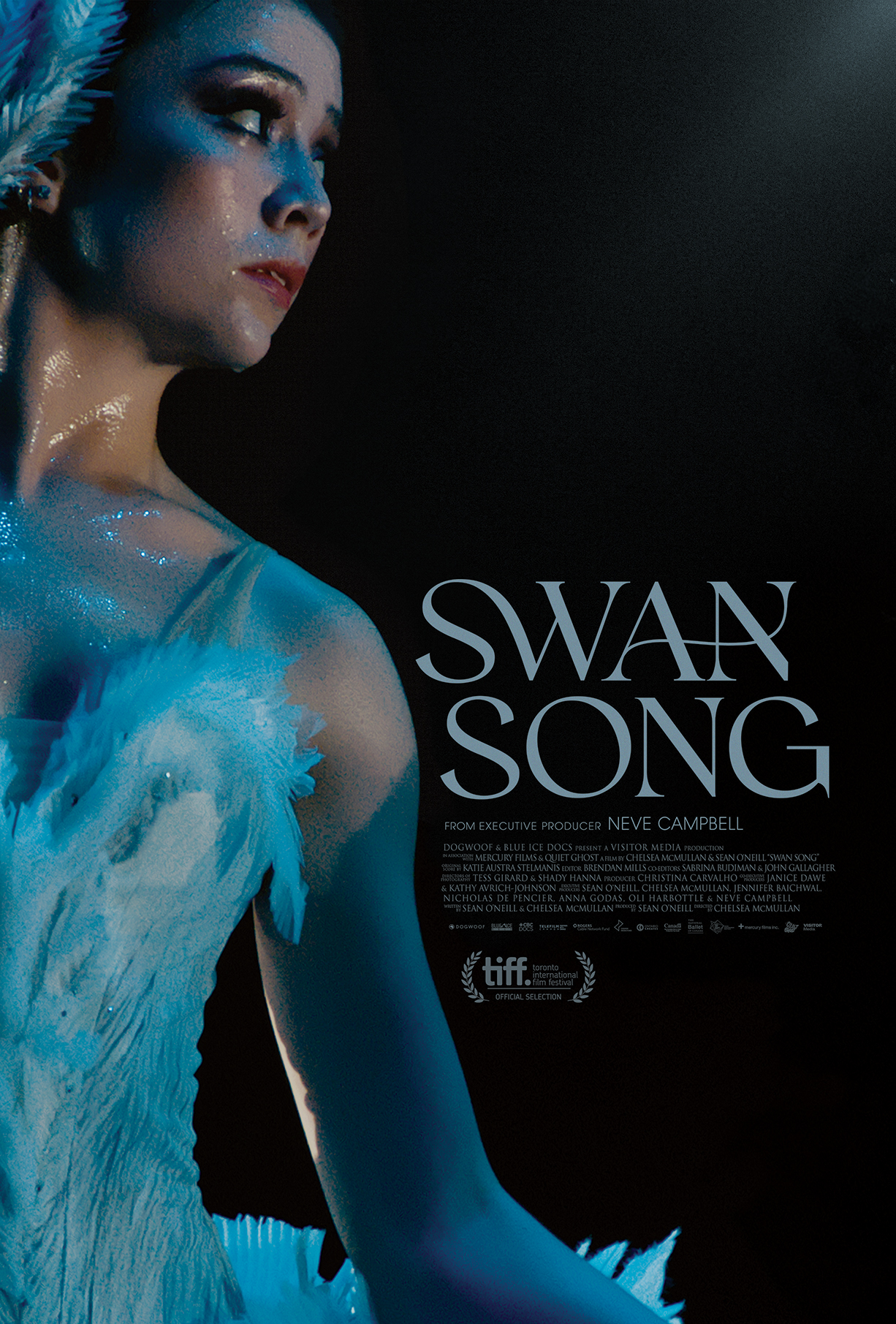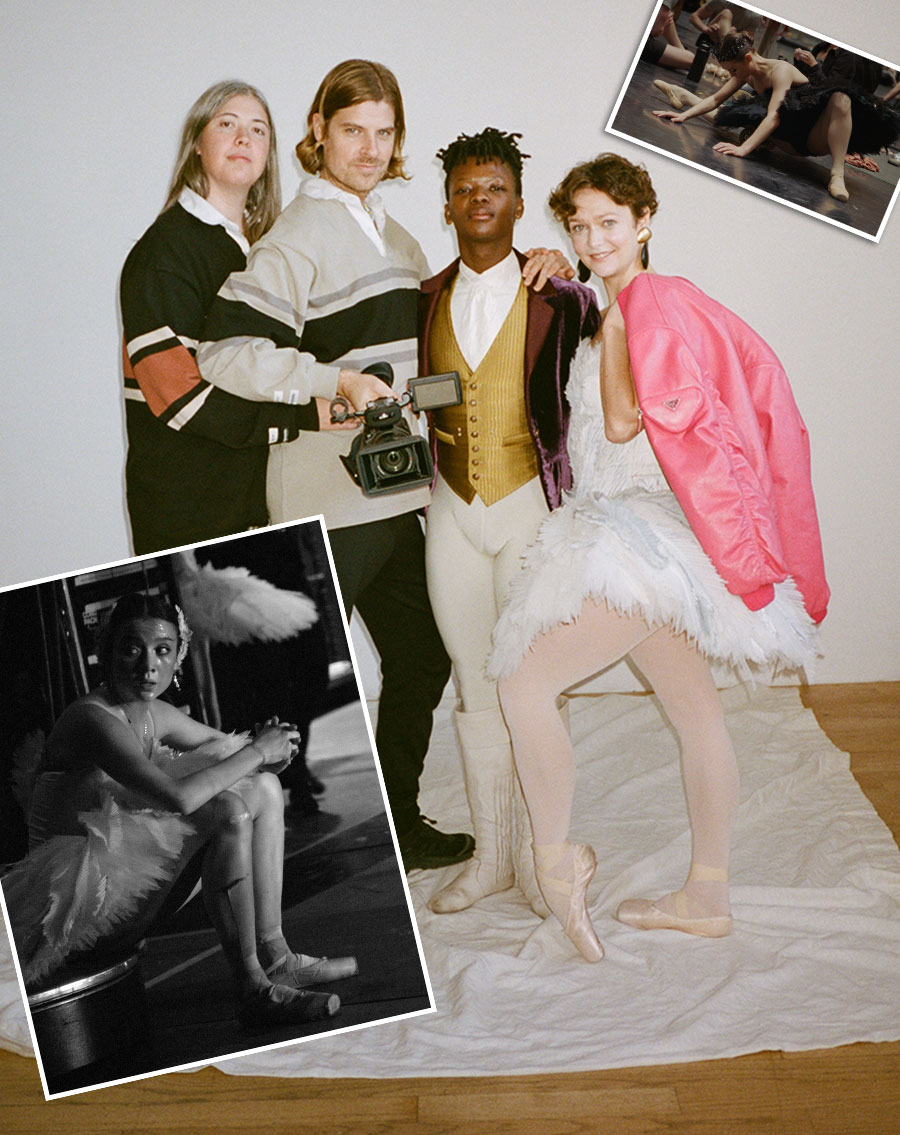Karen Kain ‘Swan Song’ Doc Offers a Compelling Behind-the-Scenes Look at the Ballet Legend’s Last Hurrah

In a new docu-series, 'Swan Song', ballerina Karen Kain copes with all the stress and chaos leading up to her final performance, as she steps into the role of director for the first time. Photo: Christopher Sherman
On a June evening last year, on her way to the première of Swan Lake at Toronto’s Four Seasons Centre, Karen Kain was nervous.
It was the National Ballet of Canada’s first live performance in two-and-a-half years, after going dark during the pandemic, and it was both a debut and swan song for Kain: the first full-length ballet she has ever directed, and last hurrah marking her retirement after 50 years with the company. As a documentary crew filmed her in the car, the tension was palpable.
“How did the dress rehearsal go last night?” asks a voice behind the camera.
“It was not a good rehearsal,” she replies evenly. A grim understatement.
“You know what they always say – tough dress rehearsal, great opening night,” says her husband, actor Ross Petty, clasping her hand.
“It has sold incredibly well,” allows Kain. “It’s probably that people are just really anxious to see dance again.”
“I think it may have something to do with you.”
“Well … I think Swan Lake is pretty compelling too.”
“Take some credit for once, woman,” says Petty, eliciting a laugh. And Kain’s face lights up with the smile that has enchanted audiences ever since she danced her first starring role at a teenager – in another Swan Lake.
The scene in the car is from Swan Song, a four-part series now available on CBC Gem after a feature-length version wowed audiences at the Toronto International Film Festival in September. This deep-dive documentary offers an unprecedented look at the stress and chaos that swirls behind the curtain of a ballet company, while drawing a remarkably candid portrait of Kain as she takes on the final, and perhaps most daunting, challenge of her career.

Five Decades En Pointe
Over the years, more than a few beloved artists have been christened “Canada’s Sweetheart,” from skater Barbara Ann Scott to actor Sarah Polley. But no one has worn this unofficial title with the grace, modesty and enduring vision of Kain.
From her 25-year-reign as Canada’s most famous ballerina to her second-act feat of reinvigorating the National Ballet as its artistic director, her career has spanned five decades with the arc of an epic grand jeté. As her princes came and went – from hometown partner Frank Augustyn to Russian superstar Rudolph Nureyev – in the eyes of the world she was the fairy-tale princess who lived to be queen.
But a dancer’s life is nothing like that. Behind ballet’s exquisite spectacle of courtly precision lies a backstage realm of pain and imperfection, injuries and insecurity, which is vividly captured by Swan Song writer-director Chelsea McMullan and writer-producer Sean O’Neill.
They shot some 500 hours of footage to construct an enthralling anatomy of the creative process, examining the lives of artists from every tier of the company, from Shaelynn Estrada, a troubled young dancer who feels stuck in the corps de ballet, to Siphe November, who aspires to be the National Ballet’s first Black performer to star as Swan Lake’s Prince Siegfried.
As the dancers rehearse under Kain’s circumspect gaze, and the suspense builds to opening night, it’s as if everyone is still auditioning right down to the wire. “I wonder how the dancers perceive me,” she muses at one point. “They seem terrified.” She, meanwhile, is quietly wracked with her own anxiety – overwhelmed by the pressure of mounting one of the most ambitious and – with a price tag of $3.5 million – costly productions in the company’s history. But that’s nothing new to her.
A Brain that Won’t Stop
“Since I was a kid, I’ve always been very anxious,” says Kain, as she sits down for an interview more than a year after the production and the film have wrapped. Even now that she’s retired, “it doesn’t go away. It’s just my personality. It’s annoying to me, and really annoying to other people. I don’t sleep well. I try. I’ve tried the whole meditation thing. My brain just won’t stop.”
Curled up on a couch in her living room, Kain at least looks relaxed and carefree, as she undercuts introspection with laughter. Her home, set back from the street in an affluent north Toronto suburb, is a sprawling Victorian farmhouse, where she and Petty, also recently retired, have lived for 37 years. Built in 1872, it once overlooked 80 hectares of fields. On a warm October day, with nothing but greenery visible through a solarium-like expanse of windows, and birdsong mixing with the faint burble of a goldfish pond, we could be in the country.
Kain introduces me to Jenny, her Maine Coon cat, spread out like a voluptuous billow of fluff under the dining room table. There is some serious art on the walls, including an iconic portrait of Kain by Andy Warhol that comes with a story from the ’70s.
In New York, after dancing Swan Lake at the Met with Nureyev, he took her to a party. “There’s bowls of cocaine on the table, caviar. Every rock star. It’s a zoo,” she recalls. “I meet Andy and he says ‘I look an angel.’ But he’s so stoned, just out of his mind. I was limo-ed to The Factory [Warhol’s studio] on a Sunday, and he mumbled and he took pictures and disappeared.” Kain hated the portrait, but has since made her peace with it.
“I Loved to Jump”
At 72, as she looks back on her career, Kain’s now coping with the less glamorous legacy of a dancer’s life. After a long recovery from a knee replacement, she’s about to get a hip replacement. Her body, she says, was never ideally suited to ballet.
“I was five-foot-seven, very tall for a ballerina,” she says, then lists her genetic impediments: “Long back, not flexible. No flexibility in my hips. Didn’t have much of a backbend. I could sort of fake it. Arabesques, I couldn’t lift my leg very high to the back. Ninety degrees was my max. Celia Franca [Kain’s first artistic director] used to say I had the tightest tail in town.” Laughing, she singles out her strengths. “I loved to jump. I had a really good jump. I was athletic, I was strong.” She also had a radiant, clear-eyed charisma that was evident the moment she stepped onstage.
Born in Hamilton, Ont., the oldest of four children, Kain spent her teens training at the National Ballet residential school in Toronto. In 1971, just two years after joining the company, she catapulted from the ranks of the corps de ballet into her first leading role at 19, replacing an injured Veronica Tennant as Swan Lake’s Odette/Odile.

Into the Celebrity Realm
A year later, Nureyev swept into the company as a guest performer and director. Overriding Franco’s objections, he cast Kain, the company’s youngest principal dancer, as Aurora in Sleeping Beauty, then crowned her as his Swan Queen partner in Swan Lake. They would tour together for five years. And as they set the ballet world on fire, Nureyev lofted her into a surreal realm of rock royalty and Hollywood stars.
The first time I interviewed Kain, 15 years ago, she recalled him whisking her off to a Paris supper club, where she was seated between Nureyev and “the largest pair of lips I’d ever seen.” It took her a moment to pull focus on an inebriated Mick Jagger, who was soon “all over me” as he tried to drag her onto the dance floor, unsuccessfully.
“I’d been dancing for eight hours that day. He wanted me to come home with him and do all sorts of other things, and I didn’t. I was very serious person.” Nureyev became her devoted coach, mentor and friend. “He was totally gay, she says, “but he loved me, and he was really clear how much he loved me. He could see I was sensitive and would sometimes lose my courage. He would lecture me on courage.”
Kain’s production of Swan Lake required a lot of it. Before retiring, she was determined to revamp Danish choreographer Erik Bruhn’s version of the ballet – the one that launched her career. The company had since replaced it with James Kudelka’s much darker production, which Kain loathed.
“I hated the design. I hated the storytelling. I hated that it was so dark and un-redeeming.” As she raised millions of dollars to restage Bruhn’s version, “I felt incredibly guilty that we had one in the warehouse that cost a lot money. But we had something precious that was discarded. I felt, I’ll never be in the position to do this again, and if I have the chance, am I brave enough? It’s now or never.’”
Artistry and Innovation
In resurrecting Swan Lake, Kain gave it boldly feminist spin – specifically in her decision to ditch the dancers’ traditional white or pink tights and have them perform bare-legged, which was unheard of in classical ballet. The initiative was prompted in part by some dancers of colour who were uncomfortable wearing tights that didn’t match their skin tones.
And Kain had never liked the imperial white-face of Swan Lake. “I thought, they’re women, not swans – trapped women who have been abducted and forced to behave like swans by [the sorcerer] Rothbart. Why can’t we just have bare legs?” Having broadened the company’s repertoire with an infusion of adventurous contemporary works as artistic director, she adds, “I always noted how beautiful their skin was and how I loved being able to see the muscles moving in their legs.”
But the innovation met some resistance. The production’s star, Jurgita Dronina, insisted on wearing sheer tights for her role as the Swan Queen because “sweaty legs” interfered with partnering. Shaelynn Estrada was traumatized by the prospect of baring her legs, which were scarred by a dark episode of self-cutting that had required 75 stitches.
But as a stoical foot-soldier in the corps de ballet, she fell into line. And while she may be no closer to realizing her dream of becoming a principal dancer, this proudly queer punk-rocker from Texas was so compelling on camera that she became a principal star of the documentary, and her face adorns its poster.
Kain says she “had no idea” what Estrada was going through until she saw the finished film. “Shaelynn and I had a talk the other night and I said, ‘I wished you’d come and talked to me a long time ago.’ She has a tough go, because she is, in so many ways – and she knows it – not ideal for the profession. Yet, she’s being given a place and she can have a place if she believes it in her own mind.”

Kain told Estrada about her own experience with clinical depression, which led her to quit dancing for several months in 1979, and then undergoing two years of weekly therapy. She also suffered from stage fright throughout her career, though it was really “backstage fright” that evaporated the moment she stepped into the lights.
In retrospect, being an artistic director was tougher than dancing, Kain says. And to see her directing rehearsals in Swan Song, her face a map of concern as she reserves judgement, is to see the antithesis of Kain the performer: Her anxiety has no place to go.
“The massive stress of running an organization was really difficult,” she says. “Having retired, I’m liking my life a lot right now.” Asked about her remaining ambitions, she shrugs. “Trying to stay healthy?” As for her idea of perfect happiness, that’s easy. “An afternoon nap with my pussycat curled up next to me.”
RELATED:
‘The Stones and Brian Jones’ — New Documentary Spotlights The Legacy of the Band’s Late Founder